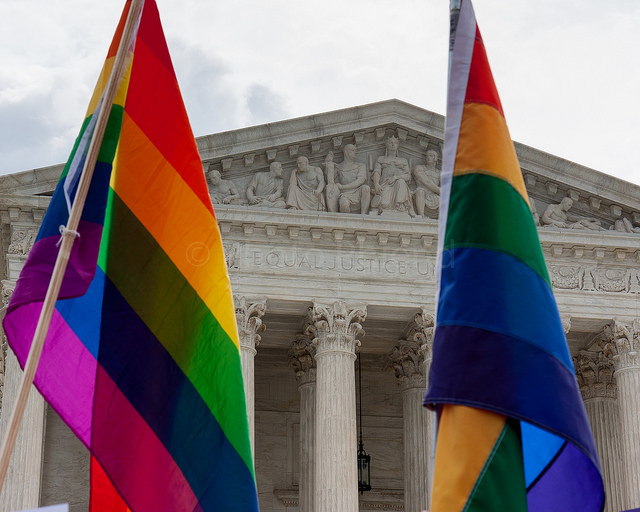
With the Supreme Court’s ruling in Obergefell v. Hodges, states must legally recognize same-sex marriage nationwide. The fight for equality isn’t over, however, as many states do not have explicit protections for same-sex couples against practices like hiring discrimination. The Texas Attorney General also ruled that individual county clerks can refuse to offer marriage licenses to same sex couples on the grounds of their religious beliefs, even if the clerks’ office must ultimately grant the license. This is the challenge with nationwide legislation: laws on the books often differs from the law in action. History shows inequality can thrive in low level bureaucracy, sometimes in spite of national policy.
Policy changes take time to wind through organizations, especially those with large bureaucratic structures like the U.S. government. Autonomous managers in the middle construct their own reasons for adopting policies, often distancing themselves from big changes at the top of the chain. An institutional culture affects the implementation of a policy as much as the policy itself.
- Frank Dobbin and John R. Sutton. 1998. “The Strength of a Weak State: The Rights Revolution and the Rise of Human Resources Management Divisions.” American Journal of Sociology 104(2): 441-476
- Bruce G. Carruthers. 1994. “When is the State Autonomous? Culture, Organization Theory, and the Political Sociology of the State.” Sociological Theory 12(1): 19-44
We can see these institutional boundaries in broader patterns of hiring discrimination against LGBT citizens that appear in experimental studies, even when employers don’t intend to discriminate. The history of federal regulation in immigration, the military, and welfare policies shows that the U.S. slowly built a bureaucratic system interested in measuring and controlling sexuality long before public battles over LGBT rights came on the scene.
- Margot Canaday. 2009. The Straight State: Sexuality and Citizenship in Twentieth-Century America. Princeton University Press
- András Tilcsik. 2011. “Pride and Prejudice: Employment Discrimination against Openly Gay Men in the United States.”American Journal of Sociology 117(2):586–626.
Similar bureaucratic patterns happen around race. When the Supreme Court repealed laws against interracial marriage in Loving v. Virginia, for example, mixed-race couples still faced clerks who were often unwilling to grant them licenses. While the GI Bill was a sweeping national effort in which many U.S. citizens got better housing and education, veterans of color often had trouble registering for those benefits in uncooperative local offices.
- Peggy Pascoe. 2009. What Comes Naturally: Miscegenation Law and the Making of Race in America. Oxford University Press
- Ira Katznelson. 2006. When Affirmative Action Was White: An Untold History of Racial Inequality in Twentieth-Century America. W.W. Norton & Co.

Comments